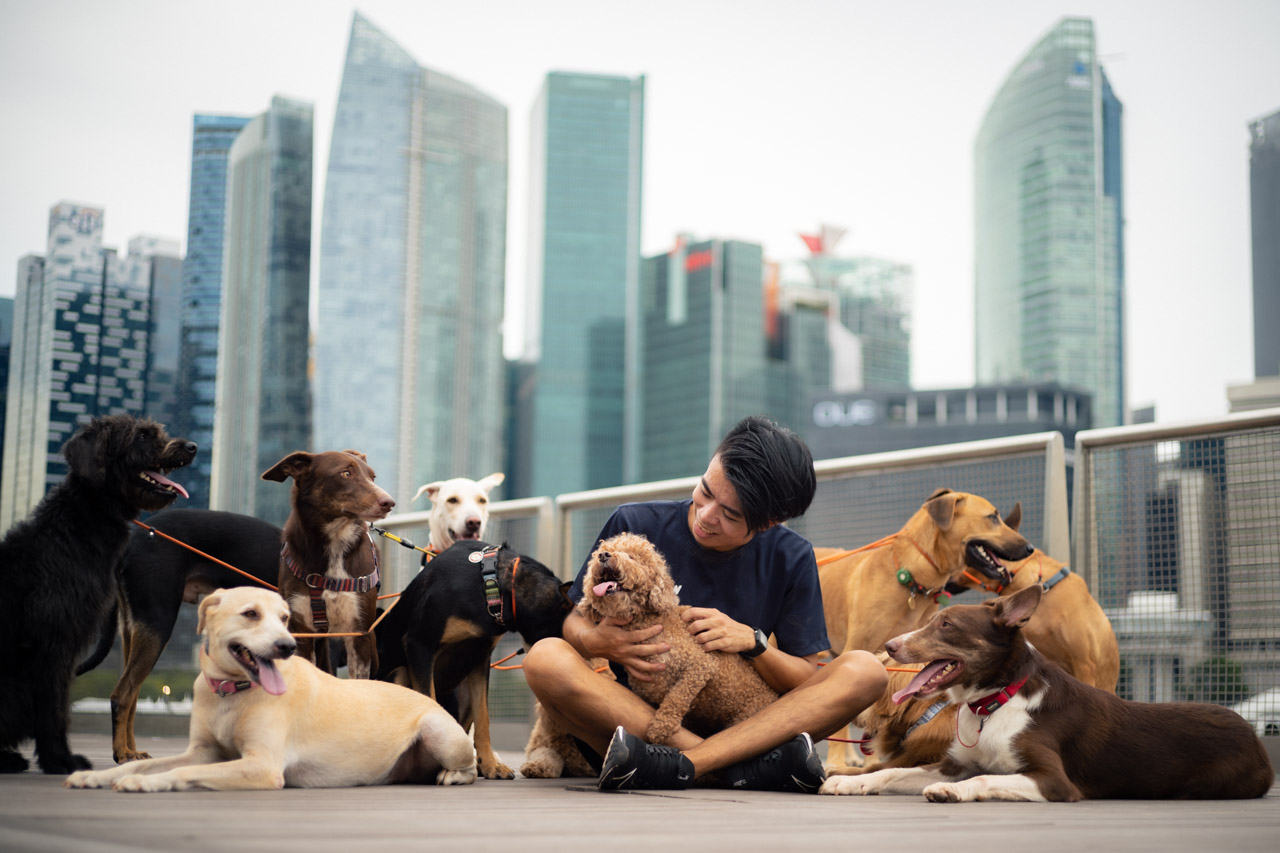All photos by Stephanie Lee for RICE Media.
It’s 9:30 AM when I meet 21-year-old Xavian Mar. Sunglasses, a dry-fit tee, shorts, and a comfortable pair of running shoes make for his outfit for the sunny day—sensible attire for his profession, I’m told.
We’re due for a long walk today. He is, after all, the proud proprietor of Xavian and Pack, a professional dog-walking and training business established mere months ago in June.
ADVERTISEMENT
His company van, the first purchase for his new company, inches slowly to a stop along the side of a road somewhere in River Valley. We have a few more minutes before his eighth dog of the day arrives for pick-up.
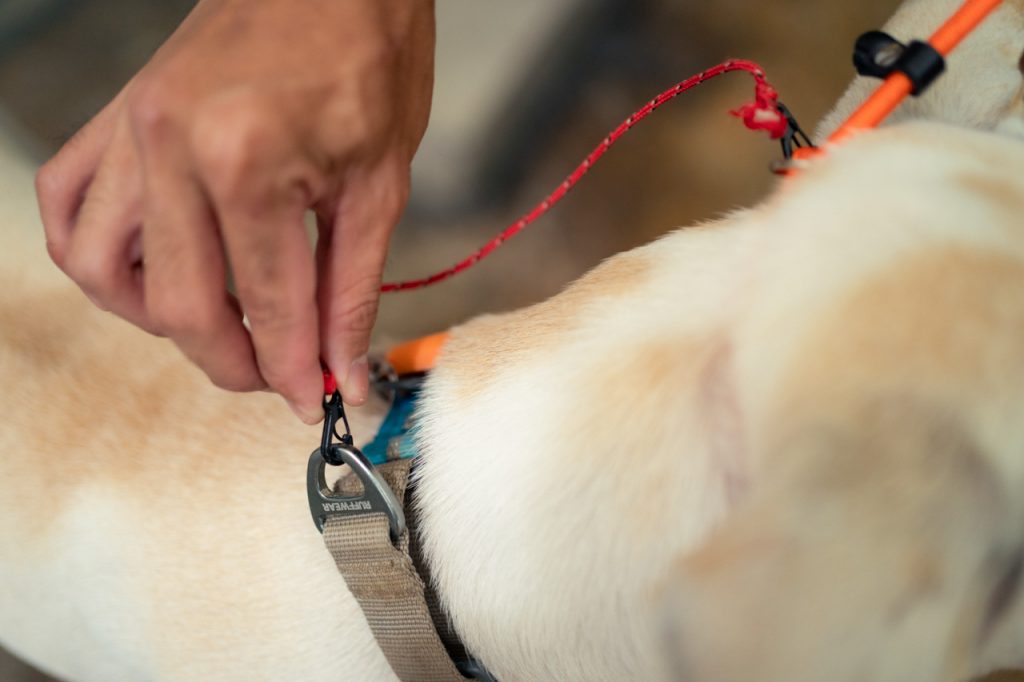
Seven canine faces, mainly Singapore Specials, bob up and down behind the vehicle window. They vie for precious window space to greet three new human companions from RICE, first rising on their hind legs before eventually tumbling on each other.
Muffled barks escape the van’s door. Xavian, palms outstretched, treads towards the dogs. The wave of excitement tapers into a grating stillness. Seven pairs of canine eyes, previously ogling the great outdoors through the window, are recast onto Xavian.
“Just walk past them, don’t worry. All these dogs are trained and are calm enough. Make yourself comfortable,” he instructs us as we manoeuvre our way into the back of his van, making ourselves comfortable amongst the pack. His gaze remains fixed on the dogs.
We have to board quickly. The eighth dog had just reached the lobby of the housing estate opposite the road. A moment’s delay now is a lifetime’s wait downstream—the six other dogs will not be happy if we don’t set off for them now.

A Dog’s Life
A tight pick-up schedule, however, does not translate into rash driving. A sudden twist around a tight corner could send the dogs flying.
ADVERTISEMENT
In the back of the van, the dogs roam and play with each other, unperturbed. While other pick-up services generally confine dogs to crates or leashes to keep them in place, Xavian believes that the dogs should be allowed to interact and roam freely—a playroom on wheels.
Opportunities for social interaction, according to Xavian, should start the moment a dog enters the van. Crates and leashes restrict dogs to a confined space and muzzle the joy out of social interaction.
“I mainly work with animal welfare organisations. The number of dogs in the shelter can be quite overwhelming because there are very few volunteers. So not all dogs get time for exercise and social interaction,” Xavian intones as he carefully navigates a tight corner.
The original pack of seven dogs have now grown into a group of twelve. Two more pick-ups left.
“The amount of social interaction between dogs at shelters is very minimal. That might cause pent-up energy and behavioural-related challenges,” Xavian explains. “Owners often under-exercise their dogs or give them little interaction. We serve to give their dogs as much time for exercise and interaction.”
“That starts from pick-up.”

Passion Made Practical
In Singapore, side hustles like freelance dog-walking rarely amount to anything more than that. More important priorities—a good education and a stable career—capture our collective attention and energy.
Passion can only be made possible if it’s practical. Or, at least, that’s what pragmatic wisdom teaches us.
But pragmatism means different things to different people. For Xavian, it would have been blatantly unpragmatic not to pursue his passion for helping dogs.
“I started volunteering at Purely Adoptions, then at Action for Singapore Dogs. At Purely Adoptions, a fellow volunteer needed help with her dog, which was very anxious. I offered to go down to her house to train it. The training helped to calm her dog down,” he recalls, coaxing a dog into the van.
A shy, long-haired dachshund nuzzles itself into the cradle of Xavian’s arms. Like a kindergartener reluctant to bid their parents goodbye on their first day of school.
What started as a freelance side hustle in 2017 turned into a lucrative business opportunity. Word-of-mouth attracted new clients looking to train their dogs under Xavian’s style of behaviour modification.
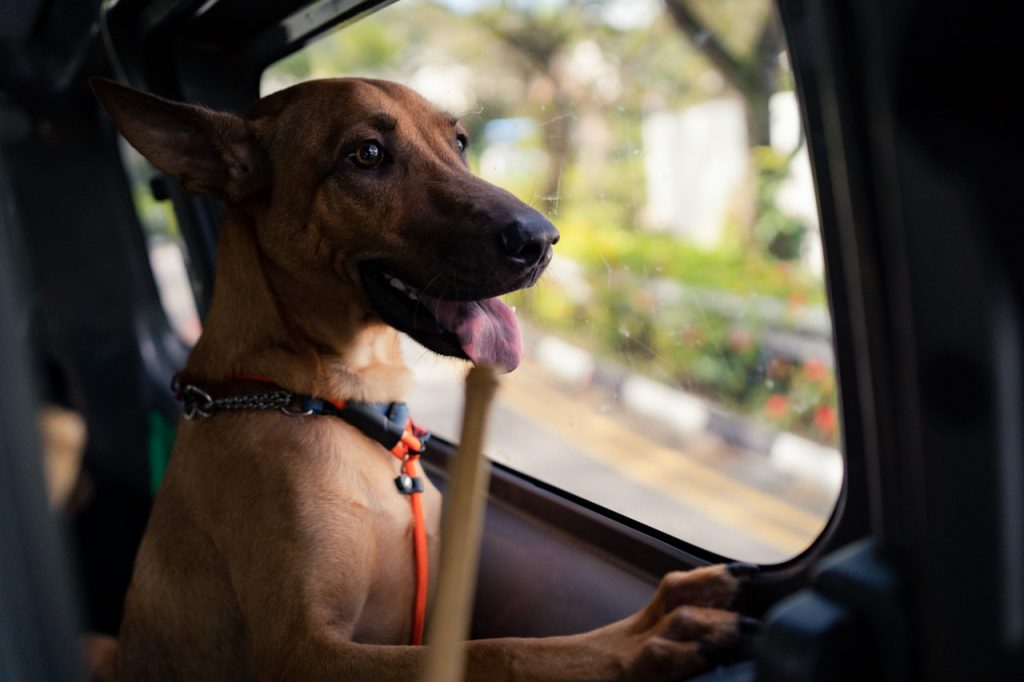
The Curious Case of Behaviour Modification
The shy dachshund sticks close to the van’s door as if contemplating the earliest possible opportunity for escape. Larger-sized dogs circle and prod the dachshund with their noses, a friendly greeting to break the ice. It remains rooted to the spot, its gaze fixed on the floor.
Nothing breaks the dachshund’s stasis until the vehicle door opens for the last pick-up of the day.
“All these dogs were once overly anxious and excitable. With behaviour modification, they’re calmer and can interact with each other better.” It seems like the dachshund needs more work.
Behaviour modification is an umbrella term for training techniques used to correct or change undesirable behaviours in dogs. These techniques are usually employed when dogs display excessive aggression or excitement towards particular stimuli.
“Behaviour modification focuses on the emotional state of the dog. Typically, these dogs display undesirable behaviour because they are anxious or fearful,” Xavian explains.
“In those cases, obedience training cannot help. How well a dog listens to commands does not mean they know not to pull the leash when seeing another dog.”
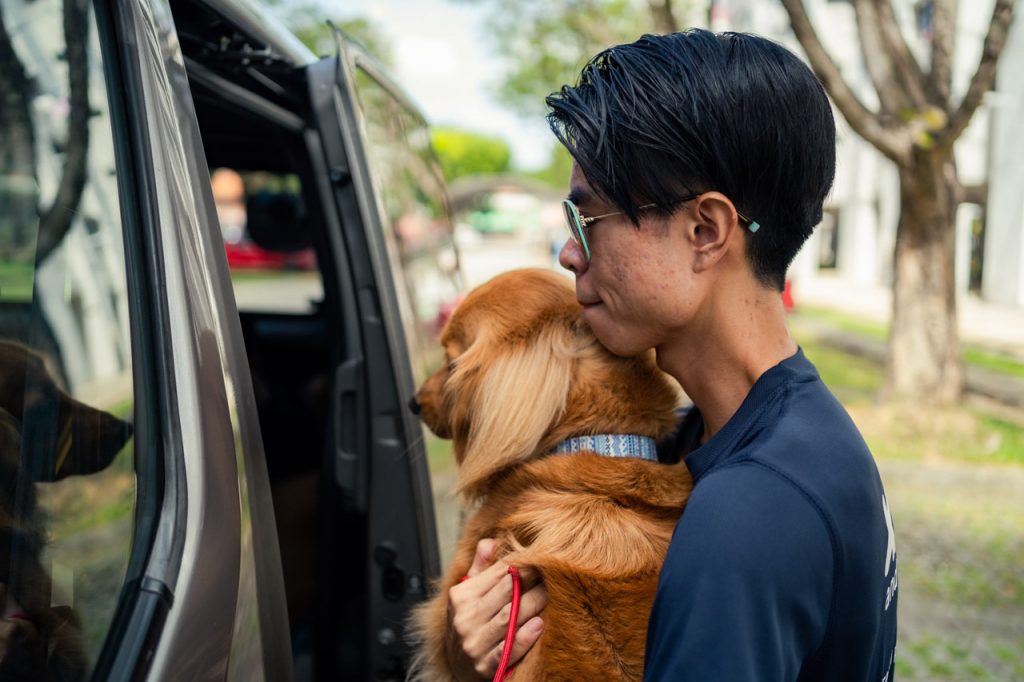
The van turns into an off-shoot road, hidden among the gentrified shophouses of Tiong Bahru. Open fields, or dog runs, are fenced areas of grass for canines to run freely and play with each other. It’s a quintessential stop for Xavian—it’s where the dogs can release their pent-up energy before going for their walk.
Like all the other times, the wave of excitement within the vehicle burns out as quickly as Xavian swings open the door. Dogs wait patiently to be leashed by him. He brings them to a small holding area before taking off their leashes.
“Obedience training is different from behaviour modification. Obedience is command-based and creates new behaviours in the dog. Like ‘sit’, ‘heel’, and ‘stay’.”
“On the other hand, behavioural modification tries to change some behaviours already present in the dog which might be undesirable.”
It’s like teaching your child to get used to doing homework. Obedience relies on the child learning to start their homework when asked. Behavioural modification changes the tantrum that comes along with it.
One creates a new habit. The other tackles pre-existing behaviour.
Who Let The Dogs Out?
Two passers-by, presumably on their way to overpriced coffee and brunch in Tiong Bahru, whip their phones out for pictures of the dogs. The dogs, all led into the holding area, press themselves against the metal fence. Only a few centimetres of steel stand between them and freedom.
The metal gate snaps open, unleashing the excitable fury of 14 dogs into the open field. Singapore Specials bound into the furthest and muddiest patches of grass. They take liberties with the mud.
Smaller dogs, like the shy dachshund, trot warily into the space, never far away from the original holding area.
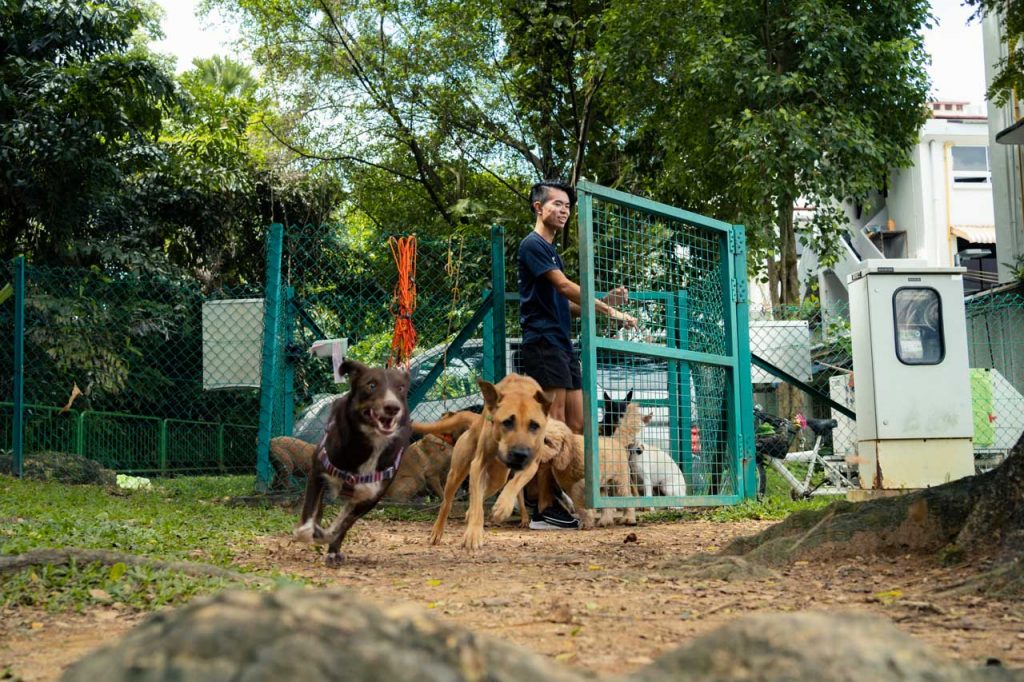
My colleagues and I meander through the grass, navigating the space as if it were an active minefield. A misstep means shoes soiled with dog poop. Xavian trudges ahead, unconcerned. His white guiding stick accompanies his trek as he keeps a watchful eye on the dogs.
For him, it’s simply part of the job. Dog excursions, where dogs spend a day with him, take place three times a week—Tuesdays, Thursdays, and Fridays. Each excursion costs between S$75 to S$85 per day per dog, depending on its breed.

On other days of the week, he spends his time on behavioural modification training sessions, which run up to about S$250 an hour.
“In each training session, we assess what stimuli trigger the dog’s undesirable behaviour. Then, we expose the dogs to that particular stimulus and condition them to be calmer. We reinforce that by bringing them on excursions and walks. They are part of the training, but also social gatherings for dogs.”
We catch up to Xavian in the middle of the field, watching over the 14 dogs in the space. He is part dog walker and part media team—owners expect photo updates of their dogs throughout the day. He makes sure to snap some pictures of each dog.

‘Almost expelled’
He shows his palms when asked about the challenges of this line of work. Scars, once puncture wounds from overly aggressive dogs, line his hands—an occupational hazard, he says.
To date, Xavian estimates that he has worked with at least 1,000 clients since he started freelancing as a dog walker while pursuing his diploma in veterinary technology. But things could have turned out differently if Xavian heeded the advice of his lecturers back then.
“My lecturers told me I should stop my business. They said it would not be worth it because they wanted me to focus on my studies.”
“That made me doubt myself because I felt like everybody was against me. It goes back to this common idea of conforming to what society expects of you,” Xavian remarks. By now, some dogs had already burned off most of their energy and were hovering close to the gate. A signal to end the session.
“I was almost expelled because of my business. My final year internship organisation saw a conflict of interest because I was running a business in the same industry. I had to explain to my lecturers and was put on probation. Basically, I risked my whole diploma to help dogs.”
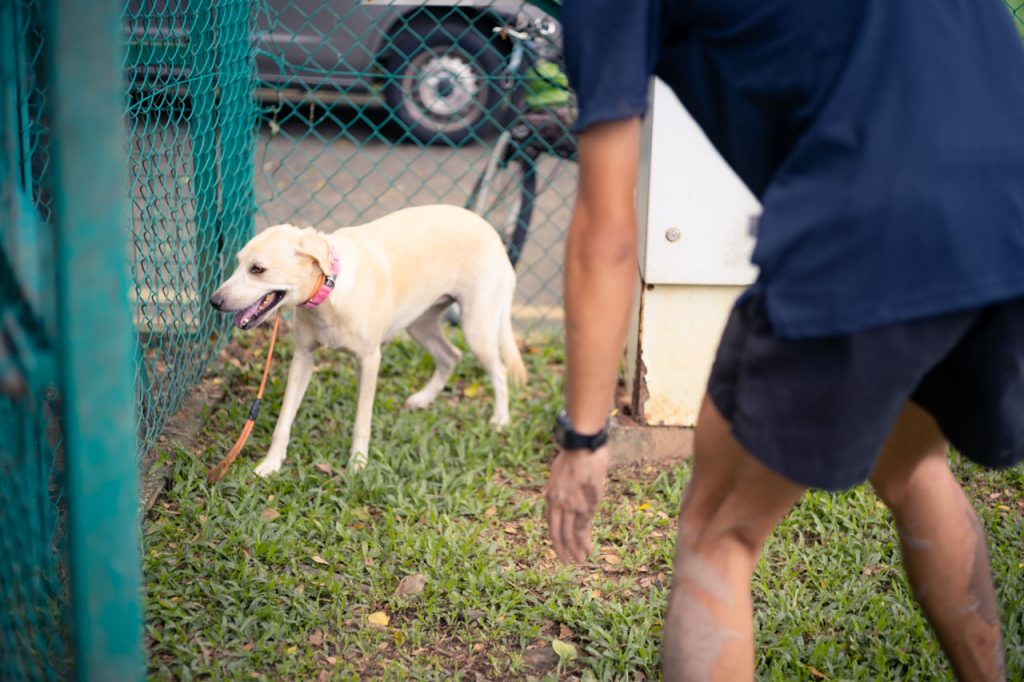
He places himself beside the metal gate. Dogs frolicking in the mud at the furthest end of the field break into an alerted scramble.
They find their feet quickly, like military cadets rushing to greet their sergeant. With swift turns, he stares down each dog before calling out their names.
As if rehearsed, the dogs amble back into the holding area once their name is called. The pack of 14 reassembles in the fenced compartment within 10 minutes. It’s impressive—some owners struggle to even get a hold of their single dog in double that time.
Mud dots every corner of his sports shoes. Muddy footprints line the tarmac as Xavian walks the pack, most of which were also covered in mud, back into the van. Together, they make their way to a washing point before heading to Marina Bay Sands for a walk.

Dog-Eat-Dog World
Competition in the dog-walking industry is stiff. According to available data from the Singapore Business Directory, 571 entities offer care services for pets and animals as their principal activity. Xavian and Pack is but one of those registered companies.
The competition in the pet service industry is cut-throat. Small businesses, like Xavian’s, compete with larger and more established dog-training schools. Pet owners are also selective. After all, they want the best for their pet.
Like the dogs that vie for window space when we first began our trip, these businesses fight to be a pet owner’s top choice. Dog walking and training holds the largest market, which also means that competition for these dogs is much fiercer.
A survey by Rakuten Insights in January 2022 found that 52 percent of pet owners own dogs. In addition, the number of dogs licensed by the Animal & Veterinary Service (AVS) increased from 46,000 to 72,000 between 2006 and 2020.
Attracting new clients will be Xavian’s problem for another day. Now, he needs to focus on the walk that lies ahead.
We reach Marina Bay Open Carpark. One by one, he carefully leashes the dogs, combining them into a single master knot.
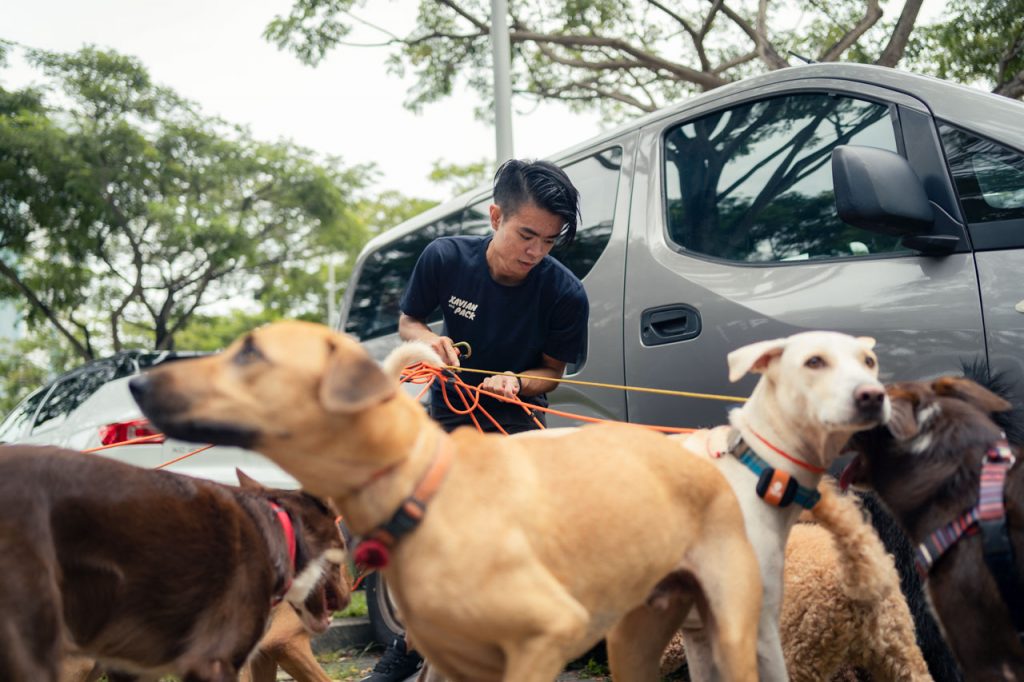
This knot is attached to his shorts—one dog mutiny away from having his shorts ripped apart. He has little to worry about because these dogs never fall out of line.
In one straight, synchronised row, the fourteen dogs turn into the scenic stretch to squeals of delights and requests for photos.
The pack will walk from the Red Dot Design Museum along Marina Boulevard to the Shoppes at Marina Bay Sands and back again. A walk along such a scenic stretch seems almost too decadent for a pack of 14 dogs, I remark. What happened to walking in the park?
“We walk them in public places like City Hall and Orchard Road because it is part of their training. I want them to get used to external stimuli and be conditioned to react calmly. The end goal is that they can walk freely without a leash.”
“The other reason is that people can see that we are treating the dogs humanely when we walk them in an open space. That builds trust and accountability. And hopefully, more dog owners will inquire about our services,” Xavian admits.
Free publicity and rigorous dog training—two birds killed with one stone. An astute business mind, he has.
Curious tourists trail behind the pack of dogs, stopping every so often for a picture. Not that he would, but there was no way Xavian could ever mistreat the dogs under the public scrutiny of Instagram stories and TikTok videos.
In fact, the dogs are so used to pictures that they seem to know how to pose.
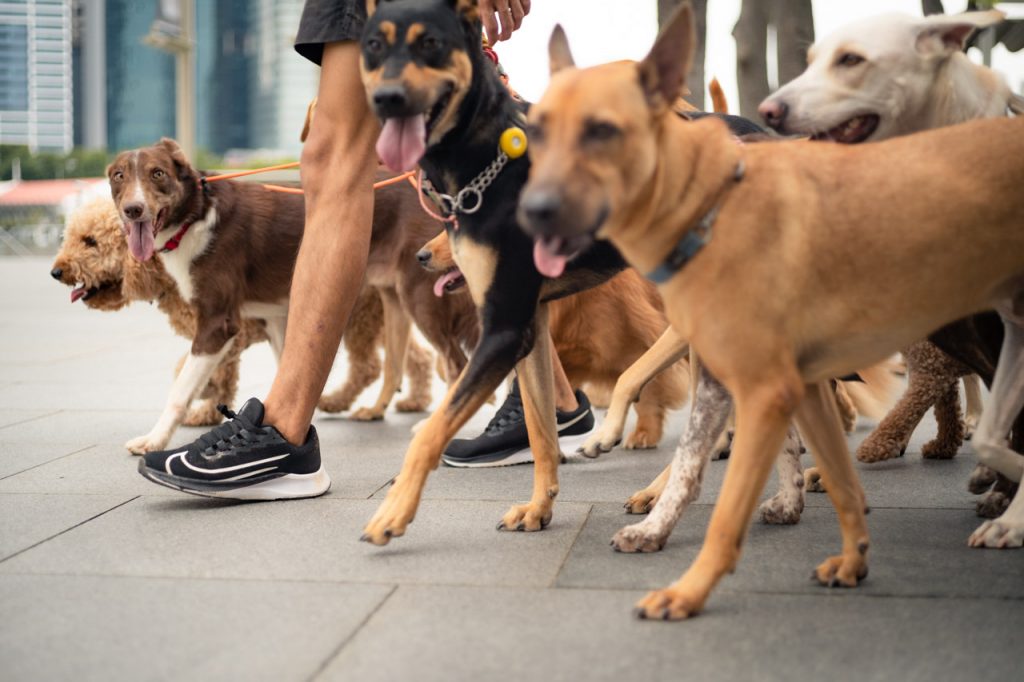
Not A Walk in The Park
Xavian reorients himself as we reach the entrance of Marina Bay Sands—the turning point of the walk.
A crowd of three tourists and curious children gather, inching slowly behind the line of dogs. Skyscrapers, outstretched towards the clear skies, loom in the distance.
“My parents wanted me to do something more traditional. Maybe work in one of these skyscrapers,” he tells me, pointing to the skyline of Singapore’s Central Business District.
“But I knew I would end up in an animal-related job. I am just inclined to nature. Everyone had second thoughts back then, but I just wanted to pursue my passion for working with dogs.”

Conventional wisdom advises against putting all eggs into a single basket. As many doors open as possible, please. Especially for someone at a young age, let alone someone working as a professional dog walker. That advice, however, means very little to Xavian.
Now, Xavian has his eyes trained on a world-record-breaking attempt at the most number of dogs walked at one time. The current record stands at 36, held by Maria Harman, an Australian from Brisbane.
I make a mental note to cover his future world-record attempt. Synchronised pants and dog whines are a cue to end the walk. The car park is not far away.
A few metres more to the company van and the 14 dogs will be on their way home to their owners. Xavian will see them again next Tuesday—perhaps, for a walk around the Central Business District next.
The dogs board the company van on their own accord, ready to go home. As my colleagues and I approach the vehicle, the wave of canine excitement that greets us in the morning is nowhere to be found. Dogs rest their heads on the van’s floor, their eyes flickered shut.
The shy dachshund, I’m happy to say, has warmed up to the company.

Hiring someone else to walk your dogs is often deemed an overpriced luxury for people who don’t have spare time to afford their pets. However, as we’ve observed, it’s no walk in the park—consider mud baths, bite scars, the mercy of dog poop, and fierce competition.
Despite the challenges, Xavian has no regrets. With dogged determination, he sets his best foot forward. Much like the overly aggressive dogs he meets in his line of work, Xavian is sure that he will be able to arrest and tame the challenges that hound him like the professional dog-walker he is.

